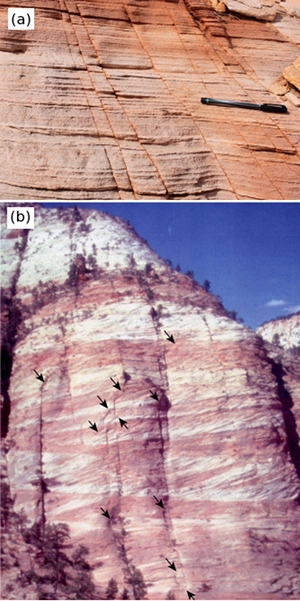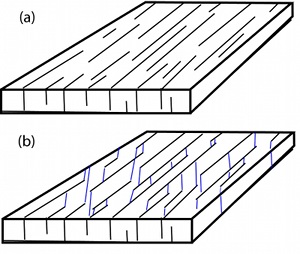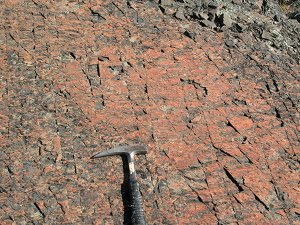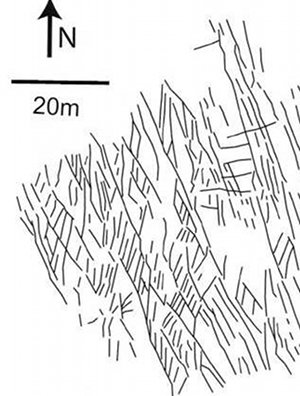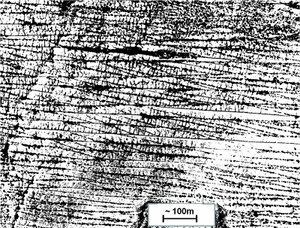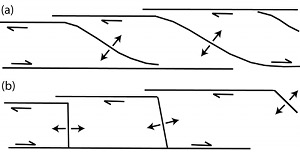| ||||||||||||
|
|
||||||||||||
|
|
||||||||||||
| Faulting by Shearing of Joints | ||||||||||||
|
Faults formed by shearing of pre-existing joints (Figure 1) or veins take advantage of weak mechanical discontinuities provided by joints and veins. Considering that rocks have lower resistance to opening mode failure, joints (or veins) are one of the earliest formed structure types in Earth's crust and consequently they are often prone to later shearing. Thus, the sheared joint-based deformation mechanism is very common in Earth's upper crust. Shearing of joints, or any plane of weakness for that matter, is commonly associated with splay fracturing. This subject has been presented under 'Splay Joints.' This mechanism results in an assemblage of a sheared joint and a splay joint (or vein). Please follow the link under 'Splay Joints' for the details of this phenomenon. In some cases, shearing of an initial discontinuity such as a joint or a vein, produces splay pressure solution seams as well as splay joints. This is discussed separately under 'Assemblages of Joints/Veins and Pressure Solution Seams.' If splay fracturing associated with shearing of a set of joints (Figure 2a) results in a set of splay joints, then the system comprises a sheared joint set and a splay joint set with predominantly opening displacement discontinuity (Figure 2b). Figure 3 shows an example for such a system in thinly bedded siltstone cropping out at Chilean Patagonia (Gonzales and Aydin, 2008). Here the splay angle is nearly 45 degrees.
Figure 4 and Figure 5 show fracture networks similar to that in Figure 3 but with somewhat different intersection angles. Additional examples of such fracture networks can be found in multiple joint sets with non-orthogonal configurations which require shearing of the older sets. The readers should be aware that the traditional use of the term 'joints' in this context is because the sheared set initially formed in opening mode or the offsets are so small that a casual observer often neglects them. However, the implication of such discriminating observation is quite significant. The geometry of a sheared joint-splay joint assemblage is controlled by the spacing and degree of saturation of the initial joint set. In addition, splay, or kink, angles and their variations are critical. Figure 6 shows two different intersection angles between the splay joints and the sheared systematic joints in the Moab member of the Entrada Sandstone exposed at Arches National Park, Utah. The intersection angles vary from 0 to 90 degrees. Please see the links for 'Growth of Faults Based on Initial Plane of Weakness' as well as several related case studies.
| ||||||||||||
| Reference: |
||||||||||||
| Aydin, A., Muller, J.R., Bergbauer, S., Eichhubl, P., Du, Y., Du Bernard, X., 2002 Dyer, J.R., 1979 Flodin, E.A., Aydin, A., 2004 Gonzales, J., Aydin, A., 2008 Moir, H., Lunn, R.J., Shipton, Z.K., Kirkpatrick, J.D., 2009 Myers, R., Aydin, A., 2004 Pollard, D.D., Aydin, A., 1988 |
||||||||||||
|
Readme | About Us | Acknowledgement | How to Cite | Terms of Use | Ⓒ Rock Fracture Knowledgebase |
||||||||||||
